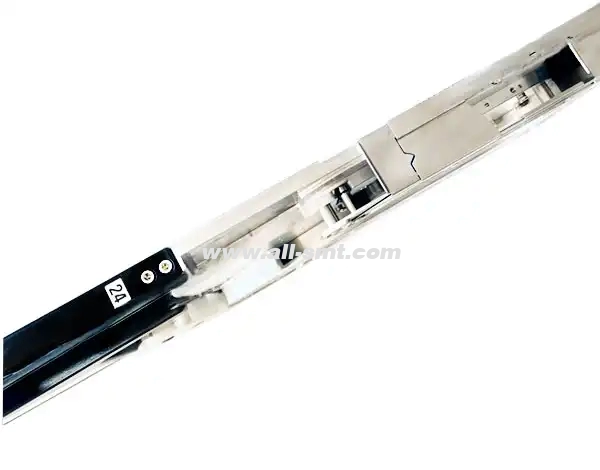In the electronics manufacturing industry, the SMT assembly process plays a critical role. It involves the precise placement of electronic components onto the surface of printed circuit boards (PCBs), making it an essential part of modern electronic product production. In this article, we will delve into the steps of the SMT assembly process, helping you understand each stage while providing SEO-optimized information to improve your website's visibility on Google.

1. What is the SMT Assembly Process?
SMT assembly is the process of mounting electronic components such as resistors, capacitors, and chips onto the surface of a PCB using surface mount technology. Compared to traditional through-hole technology (THT), SMT offers higher component density and shorter production cycles. It is widely used in the production of devices such as smartphones, televisions, and automobiles.
2. Main Steps in the SMT Assembly Process
The SMT assembly process consists of multiple stages, each requiring precise operations to ensure the quality and stability of the final product.
Solder Paste Printing
The first step in SMT assembly is applying solder paste to the PCB. A stencil is used to print the solder paste evenly on the pads of the PCB. The distribution of the solder paste is crucial for the success of the subsequent soldering process.
Pick and Place
In this stage, a pick-and-place machine places surface-mounted components onto the PCB that has been printed with solder paste. The accuracy and speed of the pick-and-place machine directly affect production efficiency and product quality. Modern machines are capable of handling smaller, more precise components, meeting the needs of high-density assembly.
Reflow Soldering
After the components are placed on the PCB, the board is passed through a reflow soldering oven. The solder paste melts under controlled high temperatures, creating a strong solder joint between the components and the PCB. Temperature and time control during this process are critical; improper settings can lead to poor soldering or damage to the components.
Inspection and Testing
Once the reflow soldering is completed, a series of inspection and testing steps are performed to ensure the quality of the solder joints. Common inspection methods include visual checks, X-ray inspection, Automatic Optical Inspection (AOI), and functional testing. These techniques help identify and correct any soldering issues before proceeding to the next stage.
Cleaning
Cleaning is the final step of the SMT assembly process. It removes any residual solder paste or flux from the PCB to prevent corrosion of the components and to ensure the longevity and reliability of the product.
3. Advantages and Challenges of SMT Assembly
Advantages:
High Efficiency and Precision: SMT allows for high-density component placement, making it suitable for compact and complex electronic products.
Space-Saving: Since SMT components are placed on the surface of the PCB rather than through holes, it saves valuable space on the board.
High Automation: The use of pick-and-place machines, reflow soldering ovens, and other automated equipment significantly increases production efficiency and consistency.
Challenges:
High Equipment Requirements: SMT assembly requires high-precision equipment, leading to higher initial investment costs.
Risk of Component Damage: During placement and reflow soldering, components may be damaged if temperatures are too high or if there is improper handling.
Complex Quality Control: The high density of components requires precise soldering and inspection. Any failure in these steps can compromise product quality.
4. Future Trends in SMT Assembly
As technology continues to evolve, SMT assembly is moving towards greater precision and automation. Here are some key trends to watch:
Miniaturization and High Density: With the growing demand for smaller and more compact devices like smartphones and wearables, SMT assembly is evolving to handle even smaller and denser components.
Smart Manufacturing: The integration of artificial intelligence (AI) and machine learning will enhance the automation of SMT assembly, allowing for real-time monitoring, error detection, and optimization of production processes.
Environmental Sustainability: As environmental regulations become stricter, SMT assembly will move towards lead-free, environmentally friendly processes, using lead-free solder and eco-friendly materials.
5. How to Choose the Right SMT Equipment and Service Providers
When selecting SMT equipment and service providers, the following factors are crucial:
Precision and Reliability of Equipment: High-precision pick-and-place machines and reflow soldering ovens are essential for ensuring the quality of the assembly process. Choosing reputable brands and certified equipment can minimize risks during production.
Technical Support and Training: A reliable service provider should not only supply equipment but also offer professional technical support and training to help businesses improve their production efficiency and product quality.
Cost-Effectiveness: Choosing cost-effective equipment and services without compromising on quality can help reduce production costs and improve profitability.
SMT assembly is a cornerstone technology in modern electronic product manufacturing, offering high efficiency, precision, and high-density assembly capabilities. During the production process, careful control over each step, from solder paste printing to inspection and cleaning, is essential for ensuring the final product meets the required standards. With continuous advancements in technology, SMT assembly will continue to evolve, meeting the growing demands of the electronics industry. By understanding the details of the SMT assembly process, you can ensure higher product quality and stay competitive in the market.






